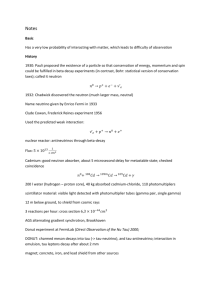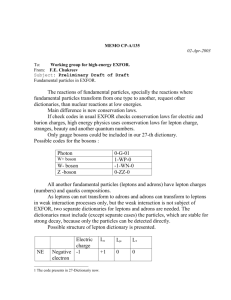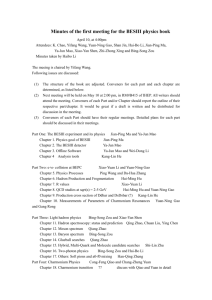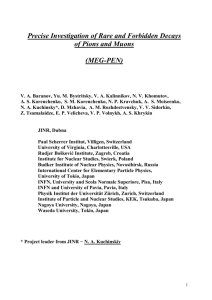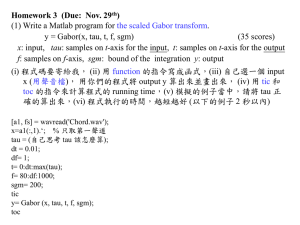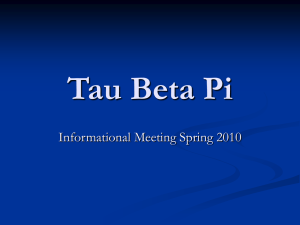physics 151h: honors mechanics
advertisement
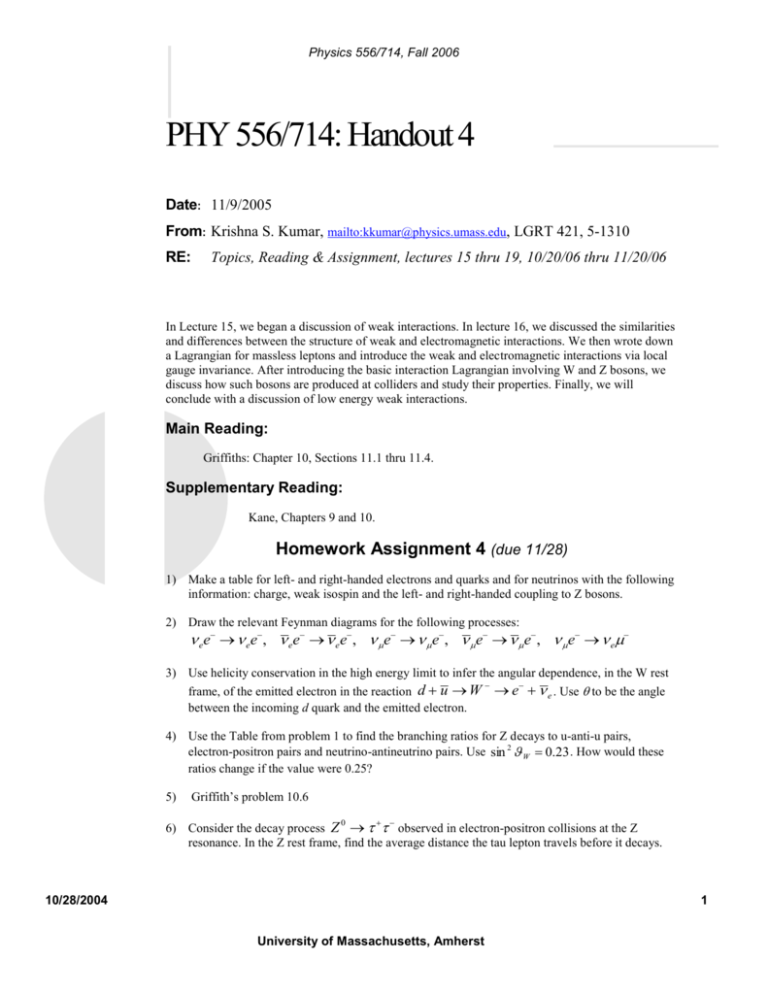
Physics 556/714, Fall 2006 PHY 556/714: Handout 4 Date: 11/9/2005 From: Krishna S. Kumar, mailto:kkumar@physics.umass.edu, LGRT 421, 5-1310 RE: Topics, Reading & Assignment, lectures 15 thru 19, 10/20/06 thru 11/20/06 In Lecture 15, we began a discussion of weak interactions. In lecture 16, we discussed the similarities and differences between the structure of weak and electromagnetic interactions. We then wrote down a Lagrangian for massless leptons and introduce the weak and electromagnetic interactions via local gauge invariance. After introducing the basic interaction Lagrangian involving W and Z bosons, we discuss how such bosons are produced at colliders and study their properties. Finally, we will conclude with a discussion of low energy weak interactions. Main Reading: Griffiths: Chapter 10, Sections 11.1 thru 11.4. Supplementary Reading: Kane, Chapters 9 and 10. Homework Assignment 4 (due 11/28) 1) Make a table for left- and right-handed electrons and quarks and for neutrinos with the following information: charge, weak isospin and the left- and right-handed coupling to Z bosons. 2) Draw the relevant Feynman diagrams for the following processes: ee ee, ee ee , e e , e e , e e 3) Use helicity conservation in the high energy limit to infer the angular dependence, in the W rest frame, of the emitted electron in the reaction d u W e e . Use to be the angle between the incoming d quark and the emitted electron. 4) Use the Table from problem 1 to find the branching ratios for Z decays to u-anti-u pairs, electron-positron pairs and neutrino-antineutrino pairs. Use sin 2 W 0.23 . How would these ratios change if the value were 0.25? 5) Griffith’s problem 10.6 6) Consider the decay process Z observed in electron-positron collisions at the Z resonance. In the Z rest frame, find the average distance the tau lepton travels before it decays. 0 10/28/2004 1 University of Massachusetts, Amherst 10/28/2004 Physics 556/714: Nuclei and Elementary Particles Use the following information: tau rest mass = 1.7 GeV/c 2, the muon decay width formula is GF2 m5 /192 3 and the branching ratio for ee is 18%. Following for 556 students only: electron scattering to produce a muon is approximately 7) The total cross-section for muon-neutrino 2 2 GF E , where E is the incoming neutrino energy in the center-of-mass frame. Calculate the cross-section (in Barns) for a laboratory neutrino beam energy of 10 GeV. Following for 714 students only: 8) This is a followup to problem 6. In the same (Z rest-) frame, consider the subsequent 2-body weak charged-current decay . The energy distribution of the pions in this frame reveals the polarization of the leptons in Z decays: P (gR2 gL2 ) /(gR2 gL2 ) , where gR ,gL are the right- and left-handed couplings of the lepton to the Z boson. Throughout, use the 2 2 2 approximation m m m Z a. Evaluate the tau polarization in Z decays for sin 2 W 0.23 and 0.25 b. Use angular momentum arguments (the neutrino is always left-handed) in the tau lepton rest frame to infer the angular distribution of the decay to be of the form gR2 sin 2 ( /2) gL2 cos2 ( /2) . Here, is the angle between the pion momentum and the spin quantization axis in the tau lepton rest frame. c. Obtain the relationship between and the energy E of the pion in the laboratory frame (Z rest frame), by applying the appropriate Lorentz transformation. (Boost along the quantization axis.) d. Using the results of parts b. and c., show that the distribution of observed pion energies in the laboratory frame (the Z rest frame) in Z decays to tau leptons is given by 1 dN 1 P (2x 1), where x = E/Ebeam and Ebeam is the energy of the incoming N dx electron and positron beams. 10/28/2004 2



